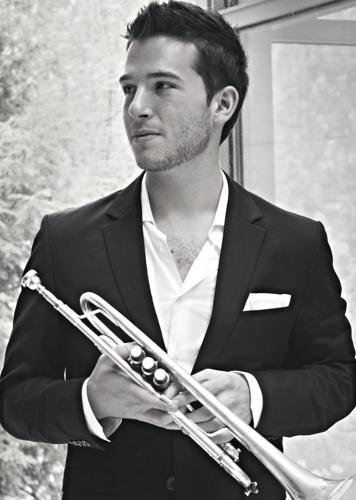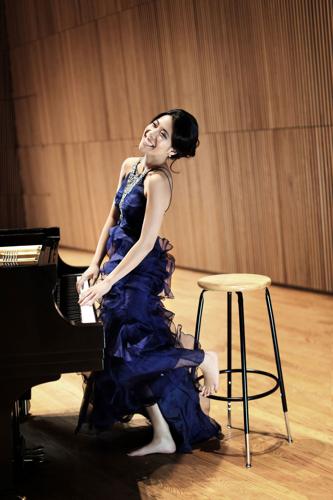The last time Van Cliburn-winning pianist Joyce Yang performed with the Tucson Symphony Orchestra was to open the 2016-17 season as Conductor José Luis Gomez was taking the reigns of the ensemble and principal trumpet Conrad Jones was making his exit.
On Friday night, all three shared the TSO stage in what felt like a reunion with all those butterfly-in-the-belly flutters that come with returning from an extended absence.
Jones, who left the TSO to become principal trumpet with the Indianapolis Symphony Orchestra at the end of the 2015-16 season, and Yang paired up for Shostakovich's Concerto No. 1 in C minor. It's a work that hasn't been performed by the TSO since 2002 and one that is more of a double concerto for trumpet and piano rather than just piano.
At its best, it's a flirtatious dance between the two principals and the orchestra, one that alternately calls for spontaneity and focus. To pull it off, the soloists play a cat-and-mouse game of one-upsmanship.
Yang, an exceptional musician with a mesmerizing stage presence, and Jones, whose singular clarion voice rings out from his trumpet with every note he plays, were perfectly matched. Jones had an answer for Yang's every thrilling run on the piano and vice versa.
Yang introduced the opening passage with fingers flying over the keyboard and the strings quietly following her lead. Jones jumped in a few moments later, answering her with a few anthemic blasts of the trumpet.
As the momentum and tension built, Yang became more animated, dancing along the keyboard with controlled abandon. At one point, the music became almost jazzy and Yang shot a mischievous smile toward the audience as the strings infused a dramatic finale.
Whenever Jones interjected, Yang would smile almost as if to say, "Oh yeah, well check this out," and then launched into an energetic, powerful run. Jones would answer almost sarcastically with a spattering of notes that felt like a giggle.
When the mood grew more contemplative, the orchestra joined in with soaring strings before Yang turned the conversation back to a head-bopping romp that Conrad enhanced with a few frenzied blasts that had some in the audience bopping along from our seats.
It's been a lifetime — November 2002 to be precise — since the orchestra last performed the Shostakovich, which is a shame. It's a wonderful piece and set the mood for the orchestra's second-half showpiece, Mahler's Symphony No. 5 in C-sharp Minor.
Ironically, the last time the orchestra played the Mahler, which opens with a startling trumpet solo, was with Jones. His replacement, principal trumpet Hayato Tanaka, did the honors Friday night while Jones and Yang slipped into the hall to watch the nearly 70-minute performance.
And what a performance. The orchestra and Gomez brought out the dramatic energy and emotional depth of the work. He allowed the quiet, stirring moments to breath while bringing out the soaring, crashing emotion with heart-stopping momentum. Strings swelled as percussion rumbled and the cymbals clattered in a way that you expected they would go off the rails only to be reined in with that solitary trumpet.
Gomez took the emotional highs to the brink of exhilaration with stunning exclamations from rumbling, crashing percussion to woodwinds and brass that rose above soaring soulful strings. Quiet moments had an underlying tension that portended a coming rush of energy as horns interrupted the mood or strings went from softly swaying to assertive and commanding.
One of the most memorable moments of the performance was when Gomez brought principal horn player Johanna Lundy to the front of the stage for the whimsical third movement. Lundy was electrifying, ringing out as a solitary, clarion voice as the strings danced a waltz behind her.





